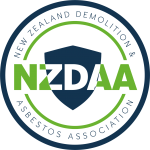Why is Air Quality Important?
Indoor air quality has become an important occupational health and safety issue. In the past few decades, energy conservation measures have led to airtight building construction that can create problems with indoor air quality. Frequently, the ventilation systems are set to minimise the amount of fresh air entering and circulating within the building. This restriction impacts indoor air by allowing a build-up of air contaminants within the building that are not properly removed.
People spend a lot of time indoors – for example, many office workers will spend their entire working day inside buildings. People working indoors often experience symptoms such as headaches, shortness of breath, coughing or nausea just to mention a few. However, it is rarely possible to prove that these symptoms are related to a particular indoor air contaminant. In fact, building occupants are simultaneously exposed to a wide range of indoor air contaminants.
Indoor air quality problems result from interactions between building materials and furnishing, activities within the building, climate, and building occupants. Causes include:
- Indoor environment – inadequate temperature, humidity, lighting, excessive noise
- Indoor air contaminants – chemicals, dusts, moulds or fungi, bacteria, gases, vapours and odours.
- Insufficient outdoor air intake.
Some examples of common indoor air contaminants and their main sources:
- Carbon dioxide (CO2), tobacco smoke, perfume, body odours – from building occupants.
- Dust, fiberglass, asbestos, gases, including formaldehyde – from building materials.
- Toxic vapours, volatile organic compounds (VOC’s) – from workplace cleansers, solvents, pesticides, disinfectants, glues.
- Gases, vapours, odours – off-gas emissions from furniture, carpets, and paints.
- Dust mites – from carpets, fabric, and foam chair cushions.
- Microbial contaminants, fungi, moulds, bacteria – from damp areas, stagnant water and condensate pans.
- Ozone – from photocopiers, electric motors, electrostatic air cleaners.
It is common for people to report one or more of the following symptoms:
- Dryness and irritation of the eyes, nose, throat, and skin
- Headache
- Fatigue
- Shortness of breath
- Hypersensitivity and allergies
- Sinus congestion
- Coughing and sneezing
- Dizziness
- Nausea.
People generally notice their symptoms after several hours at work and feel better after they have left the building or when they have been away from the building for a weekend or a vacation. Many of these symptoms may also be caused by other health conditions including common colds or the flu and are not necessarily due to poor indoor air quality. This fact can make identifying and resolving indoor air quality problems more difficult.
Assessing & Monitoring Your Air Quality
Precise will come to your workplace and design a monitoring package to best identify any problem areas. We compare your levels to the Workplace Exposure Standard and make recommendations to ensure that your staff are safe and comfortable while in the workplace.






